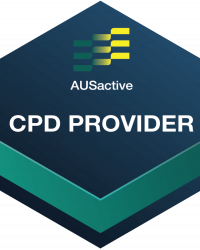Mat Repertoire
Back Extension:
Swan Dive
Alternate Names
Swan
Derived From
Classical Mat Work: The Swan Dive
Primary Element
Strength
Why for Primary?
To further develop strength in the back extensor muscles and scapula stabilisers.
Secondary Element
Mobility
Why for Secondary?
To further develop thoracic mobility as well as increased mobility in the extension component of moving in the sagittal plane.
Tertiary Element
Stability
Why Tertiary?
To focus on abdominal control during the extension component of moving in the sagittal plane.
Repetitions
Four to six
Plane of Motion
Sagittal
Targeted Muscles
Back extensors or the thoracic erector spinae group, primarily:
- Iliocostalis
- Longissimus
- Spinalis – the main extensor (backward bending) muscle of the thoracic spine, located on either side of the vertebral column
For engagement through the abdominals the transverses abdominis and rectus abdominis are working to create stability as well as the internal and external obliques.
Warnings
Not suitable for some spine issues or where the client is unable to work in a pain free range of motion. Also unsuitable if the client is unable to lie prone. An alternative would be to work through the Warm Up exercise Back Extension Preparation in a standing or high kneeling position imagining being prone, or standing Swimming as a variation.
Execution
Lie prone on the Mat in a neutral pelvis position. Extend the arms in front with the hands on the floor to the side. Draw the shoulders back, draw in through the abdominals and bend and straighten the arms three times letting the legs lift upwards as the elbows bend.
Keeping the arms straight exhale to lift the arms off the floor and reach them to the side, engage the abdominals and lift the legs as high as is possible maintaining the stability of the spine. Inhale to lift the spine into back extension incidentally lifting the chest up and allowing the legs to lower in a rocking motion. Repeat for the intended repetitions before lowering the arms and legs back to the Mat.
Observations
Do a body scan of the client taking note of the following points
- Head and Neck
- Is the back of the neck long and crease-free? A slight retraction of the neck with the chin tucked can help avoid straining the neck
- Shoulders
- Are the arms reaching up and overhead?
- Pelvis
- Are the hip bones even horizontally or is the client leaning to one side?
- Is the client about to keep a posterior tilt throughout with the pubic bone pressing into the Mat? Avoiding over-extending in the lumbar spine?
- Legs
- Are the legs connected and engaged with the gluteals assisting to lift and then hold the legs lifted?
- Are the legs staying adducted throughout the whole exercise?
Learning Style Technique Cues
Auditory – word associations that connect mind and body
- Keep length in the spine and maintain the same shape as you lift up into the back extension
- Say the client’s name when you’re about to interact with them
Visual
- Imagine a rocking herb chopper, or mezzaluna, moving steadily back and forth keeping the same shape and pace throughout the movement
- You may demonstrate a part of the movement as a visual representation for the client to see
Kinaesthetic
- Move the bottom of your ribcage out at the front and in the back below the scapula
- Engage the gluteals to lift the legs up into hip extension
- Keep the back of the neck long with no creases in the skin
Modifications and Variations
Regress the exercise by
- Reducing the repetitions and/or pace
- Reducing the height of the legs
- Keeping the hands in contact with the floor throughout
- Working on Warm Up: Back Extension Preparation
- Working on Back Extension: Double Leg Kick
- Working on Back Extension: Swimming
- Standing and creating the movements without adding the rock straight away
Progress the exercise by
- Increasing the repetitions and/or pace and maintaining the same level of stability and control
- Increasing the range of motion
- Lying on a less stable or smaller surface, for example a Bosu or Spine Corrector
- Reaching the arms above the shoulders or overhead to create a longer lever to control the abdominals. Add hand weights or try adding on presses into the Magic Circle whilst holding the posterior pelvic position and thoracic extension with the legs moving
- Working towards Back Extension: Rocking
Series and Transitions
This exercise is part of the Back Extension series which includes a range of other exercises in the fundamental and progressive repertoire. The Back Extension series can also be found in the Reformer, Wunda Chair, Cadillac and Barrel repertoire.
Transition into a rest position with Warm Down: Prayer Stretch to stretch the lumbar spine.
Inspired Academy follows the order to create mobility before building strength.
Fundamental repertoire
Progressive repertoire

